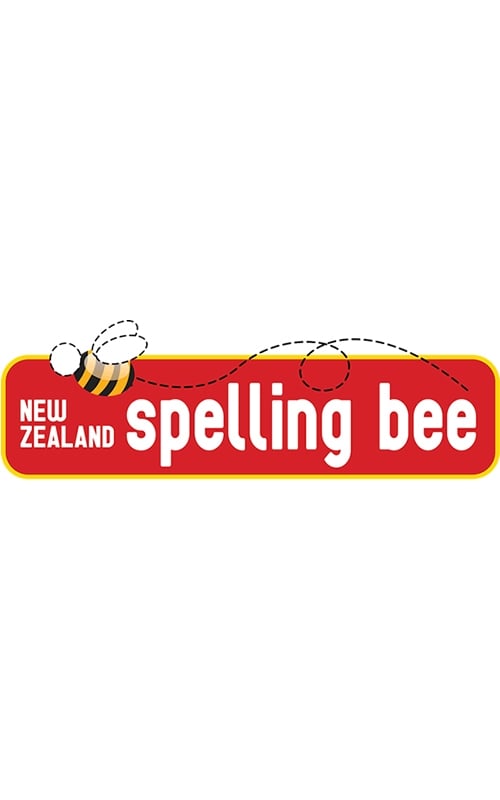
TVNZ 1
Featured Show:
Radio with Pictures
Radio with Pictures was an early music video program, airing on New Zealand broadcaster TV2 from 1976 to 1986. "RadPix" aired as a weekly, late night series featuring adult and alternative music. In 1976, TV2 producer Peter Grattan coordinated pop clips being supplied for no charge by record companies, some of them being unsuitable for the children's or prime time schedule With over sixty 'unusable' pop clips, Grattan proposed a late night "radio with pictures" concept to then-Head of Programs Kevan Moore. Moore was a former producer of The C'mon Show, a popular music series in the 1960s, and had included pop clips in that program. The concept was approved and the first thirteen half-hour episodes aired from September through December 1976. RadPix had no budget and thus no host; instead, imaginative Terry Gilliam-style graphics linked the various pop clips. The first clip to play was Steve Miller's Fly Like an Eagle and the first show also featured New Zealand band Red Hot Peppers. Subsequently, a NZ-based act was featured every week and to end the first series, Grattan produced a Keepin' It Kiwi special with ten NZ acts. RadPix also became an avenue for international acts such as Bob Marley, Little Feat, Blondie and Rainbow to gain fans, promote tours and sell records.
TVNZ 1 TV Shows
164 shows • Page 8 of 9
 0
0Radio with Pictures
Radio with Pictures was an early music video program, airing on New Zealand broadcaster TV2 from 1976 to 1986. "RadPix" aired as a weekly, late night series featuring adult and alternative music. In 1976, TV2 producer Peter Grattan coordinated pop clips being supplied for no charge by record companies, some of them being unsuitable for the children's or prime time schedule With over sixty 'unusable' pop clips, Grattan proposed a late night "radio with pictures" concept to then-Head of Programs Kevan Moore. Moore was a former producer of The C'mon Show, a popular music series in the 1960s, and had included pop clips in that program. The concept was approved and the first thirteen half-hour episodes aired from September through December 1976. RadPix had no budget and thus no host; instead, imaginative Terry Gilliam-style graphics linked the various pop clips. The first clip to play was Steve Miller's Fly Like an Eagle and the first show also featured New Zealand band Red Hot Peppers. Subsequently, a NZ-based act was featured every week and to end the first series, Grattan produced a Keepin' It Kiwi special with ten NZ acts. RadPix also became an avenue for international acts such as Bob Marley, Little Feat, Blondie and Rainbow to gain fans, promote tours and sell records.

Intrepid Journeys
Intrepid Journeys is a New Zealand television series, which screens on TV ONE. Making its debut in 2003, the show focuses on New Zealand "celebrities" who travel over to exotic countries to see the country's history, culture and people. It is a multi-award-winning travel series. It is not a “Survivor” style manufactured “challenge” show. It is about meeting real challenges in the real world, travelling to lesser-known places and then getting around the way locals do… by foot, bus and camel. Aside from being physically challenging, Intrepid Journeys also acts as a conduit to other cultures and countries that may otherwise only be seen on the news when all hell is breaking loose. This series is a chance to get past stereotypes, myths and bad press, to get out into the real world and experience life challenging and changing travel. Across each hour-long episode, Intrepid Journeys follows a celebrity traveller for two weeks in a rough and ready destination. The appeal of the show is two-fold. Aside from seeing a personality rise to a real challenge, there is also the chance to gather real working knowledge and understanding of places, lives, events and happenings foreign to Western culture.
 0
0Play School
Play School was a New Zealand educational television show for children. It was based on the British Play School show. It was first broadcast in New Zealand during the 1975 originally screened twice a day at around 10am and then 2:30pm. Playschool was filmed from what was then TVNZ's Dunedin Studio. The last series screened on television in 1990. The show starred five toys, which are famously nostalgic for New Zealanders who watched the program as children. They are: ⁕Big Ted: A traditional-style golden coloured teddy bear ⁕Little Ted: Identical to Big Ted, but much smaller ⁕Manu: A very human-looking plastic doll with Māori features, such as dark skin and hair ⁕Jemima: A rag doll with orange woollen hair ⁕Humpty: A round green fabric toy resembling Humpty Dumpty. Today, Big Ted, Manu, Jemima and Humpty are part of a collection at the Museum of New Zealand Te Papa Tongarewa in Wellington, New Zealand. The museum also has a large collection of clothing and props from the show. The whereabouts of the original Little Ted is unknown. One of the rehearsal Little Ted toys was blown up by the film crew after the completion of the final series and can be seen at the Otago Settlers Museum in Dunedin. The original clock from the series was discovered at a library in Invercargill in August 2009.
 0
0The Rich List
The Rich List is a TV ONE New Zealand television game show, which debuted on 23 June 2007 and screens at 8:30PM. The show is hosted by Jason Gunn and is produced by Imagination Television. A second season has screened and a third season screened in November 2008.
 0
0Treasure Island
Treasure Island is a popular reality television game show produced in New Zealand by Eyeworks Touchdown as well as in Ireland and Australia. In the show, contestants are isolated on a remote Fijian island and compete for a cash prize. "Treasure Island" is based on the successful Swedish show Expedition: Robinson and precedes the American reality show Survivor.
 0
0The Great New Zealand Spelling Bee
"The Great New Zealand Spelling Bee" is a New Zealand game-show type series that pits well known New Zealanders against each other in a Spelling Bee type layout.

20/20
20/20 is a current affairs television series made in New Zealand and hosted by Sonya Wilson. 20/20 was originally screened on TV3 between 1993 and 2003 but the format was picked up by TVNZ in 2005. It was hosted by Miriama Kamo at that time. While some of the content is locally produced much of content is taken from the US 20/20 show produced by ABC.
 0
0Jandals Away
Jandals Away is a New Zealand comedy series that follows the Ofa family, who rescue people in return for free satellite TV to watch Warriors games. With a secret base on the tiny island of A'a'a, they call themselves The A'a'a Rescue Organisation or T.A.R.O.
 0
0Tagata Pasifika
Tagata Pasifika is an English language New Zealand programme which screens on TVNZ's TV ONE and on Māori Television. This programme is made to specifically meet the niche market of New Zealand's Pacific Islander population.
 0
0Raise My Kids
Raise My Kids is a New Zealand reality show wherein participants are put in charge of the children of a relative or family member for five days.
 0
0Fair Go
Fair Go is a New Zealand consumer affairs television program now co-hosted by Gordon Harcourt and Pippa Wetzell. First aired in 1977, it is one of New Zealand's longest-running and highest-rated programmes, frequently placed high in the New Zealand TV Guide list of most viewed programs. Fair Go features a mixture of investigative journalism and consumer affairs stories, based on the motto: "If you've been ripped off, short-changed or given the runaround and nobody wants to know...we do!" Fair Go also holds the annual Fair Go Ad Awards, in which the best and worst advertisements on New Zealand television are announced, and a competition to find the best 30-second video by New Zealand students is held.
 0
0Good Morning
Good Morning is a New Zealand morning television magazine lifestyle show. It airs weekday mornings from 9am - 12pm on TV ONE. The show began in 1996 and is hosted by Jeanette Thomas and Rod Cheeseman. Episodes typically include segments on cooking, craft, exercise, fashion and beauty, and topical discussion panels, as well as interviews with celebrities and other noteworthy people.
 0
0Te Karere
Te Karere is a New Zealand news and current affairs programme broadcast in the Māori language. Te Karere is broadcast on Television New Zealand's TV ONE at 4 pm on weekdays and repeated 1:05 am and 5:35 am the following day. It is available in Windows Media format from 5:00 pm after the broadcast. The show introduced subtitles via teletext on televisions during its 4 pm broadcast, excluding interviews. The focus of the programme is content which is of national significance to the targeted Māori audience.
 0
0The Insider's Guide To Love
The Insiders Guide To Love is a New Zealand drama series that explores the lives of a group of seven previously unconnected people. Each is implicated in a bizarre incident, the outcome of which forces them to examine and explore the loves in their own lives. The series is a prequel to the show The Insider's Guide To Happiness, with James the only character in common.

What Now
An entertainment show for primary school-aged children. The series is known for its challenges that sometimes result in participants being 'gunged'.
 0
0Saturday Disney
Saturday Disney was a New Zealand Saturday morning children's series. The last episode aired in 2006, with Studio 2 taking on the Saturday show, called Studio 2 Saturday which finished later that year.
 0
0Taonga
Taonga is a New Zealand documentary series about New Zealand art and artists that debuted in 2006.
 0
0The Market
The Market is a New Zealand drama series set in South Auckland's Otara Markets. The show is centered around two families, one Māori and one Samoan.
 0
0So You Wanna Be a Popstar?
So You Wanna Be a Popstar? is a New Zealand celebrity karaoke reality series that pits celebrities against each other in front of a judging panel.
 0
0The OUTHouse
The OUTHouse is a New Zealand magazine style talkshow series that deals with gay and lesbian issues in a comedic way. Hosted by Greg Mayor, Amanda Betts and Andy Curtis, The Outhouse is a funny and slightly hazardous show dealing with the issues facing gay New Zealanders today. The Outhouse hosts promise to talk about gay matters the way the Sports Café larrikins discuss sport. Greg Mayor has extensive experience in New Zealand television production. Greg was most recently seen on screen as a social commentator on TV One's Tonight. While Greg has had plenty of on-screen experience, it took some coaxing from the producers of The Outhouse to get him back on screen in a permanent role. Co-host Amanda Betts has a varied curriculum vitae, including modelling work, appearing in television commercials and career and motivational speaking. For a period, Amanda was the 'face of the 80's'. Completing The Outhouse panel is Andy Curtis. Andy immigrated to New Zealand in 1977. He has worked as a waiter and recently completed his degree in 3D furniture design and has had his work exhibited. 22-year-old commentator Ollie Hall has extensive experience in journalism, having edited Express, New Zealand's national gay newspaper.